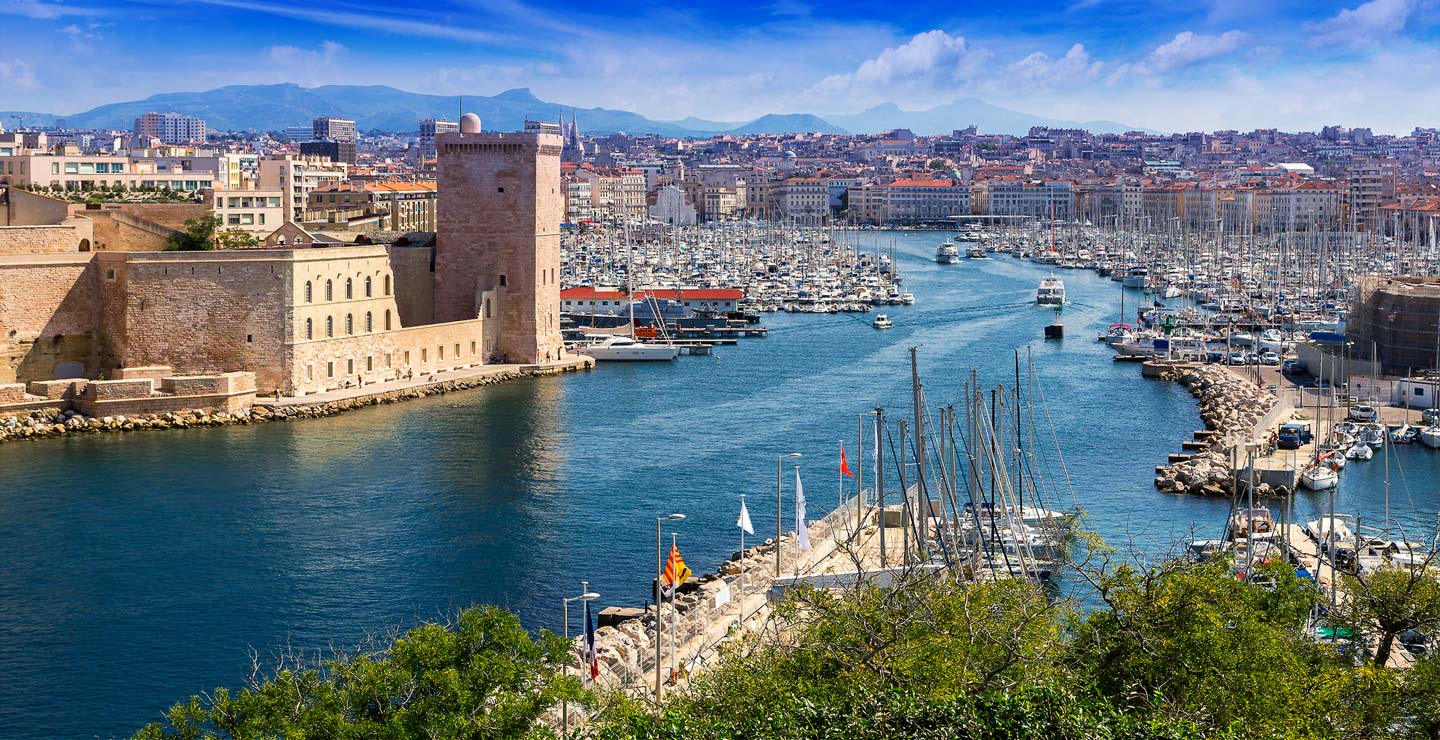Jumping on a train to Marseille means travelling straight to the heart of Mediterranean history, diversity, conviviality, and, above all, the sea. Since antiquity, Marseille’s warm waters made the capital of Provence-Alpes-Côte d'Azur a famous commercial port at the crossroads of many southern nations. The European capital of culture in 2013, Marseille is home to Le Corbusier’s famous brutalist housing project, - la Cité Radieuse; the striking Notre-Dame-de-la-Garde basilica overlooking the city; and the picturesque alleys of “Le Panier” (Old Town). 1h30 from Lyon by train, 3 hours from Paris, 6h30 from London and 4h30 from Barcelona, the sunniest French city delights with its buzzing squares, fragrant markets, trendy nightlife and stunning coastal scenery.
Visiting Marseille
Le Panier is a 15-minute walk west from the central and main railway station, gare de Marseille-Saint-Charles, and an ideal place to soak up the provencal atmosphere. This maze of passages, stairs, colourful buildings and lively squares is the oldest neighbourhood in France, founded in 600 BC by Greek sailors called Phocaeans. For more local history, visit the Musée D'Histoire de Marseille, a convenient stop en route to the Old Town from the train station.
Heading further west, the northern shore of the Vieux-Port (Old Port) is popular with tourists and party goers. The modern architecture of the MuCEM (Museum of European and Mediterranean Civilisations) is in stark contrast to the historical Fort St Jean’s military complex (17th century), and the Neo-Byzantine Cathédrale de la Major and Halles de la Major (19th century). The latter is one of Marseille's gastronomic hubs, with various food markets and restaurants, as well as electronic music club nights under beautiful vaults.
In the South of France, “l’apéritif” is sacred. This pre-dinner drink is often Pastis, an anise-flavoured liqueur served in any bar of the Vieux-Port. Try La Caravelle’s intimate balcony for beautiful views of the waterfront, tapas, cocktails and jazz concerts in an authentic atmosphere. From there, head east on the lively Canebière – Marseille’s most famous avenue – to reach the hip neighbourhoods of Cours Julien, La Plaine and Noailles. Their markets are a favourite meeting point among locals – particularly Noailles’, which is similar to a souk.
To see all this from the sky, Notre-Dame-de-la-Garde is a must. From Noailles, walk 30 minutes walk south and 120 steps up to be rewarded by spectacular panoramas of the city. The lavishly decorated interiors of this Neo-Byzantine church and the huge golden statue of the Virgin Mary on the bell tower are definitely worth the effort too.
Apart from the Vieux-Port, where can one see the sea? Everywhere! And particularly alongside the Corniche Kennedy, a coastal road following the Mediterranean to the south. It’s adorned by stunning landscapes such as the Vallon des Auffes. This quaint fishing village is the perfect place to have bouillabaisse, a traditional fish stew originating from Marseille. When leaving the corniche and heading south-east, the Cité Radieuse can be visited – whereas staying on the corniche will lead to the Calanques. These rocky hidden bays, licked by impossibly turquoise waters, are Marseille’s most precious gems.
AVE trains between France and Spain – from just €29! *
Forget about flying: it’s time to take the train between France and Spain! Renfe, Spain’s national train company, has just launched new routes between France and Spain. Whether you’re planning a trip from Lyon to Barcelona or Marseille to Madrid, you can travel in style on a high-speed AVE train. Tickets start from €29 when travelling from Lyon or Marseille to Spain.
Sit back and relax as you enjoy free WiFi and plug sockets at your seat, plus the freedom to stretch your legs and grab a coffee from the onboard café-bar at any point throughout the journey. Tickets available to buy now with Trainline.
* Prices subject to availability.

